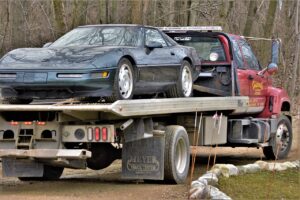Introduction
A wire harness, also known as a cable harness or wiring assembly, is a systematic and organized arrangement of wires, cables, and connectors that transmit electric power or signals. This indispensable component finds extensive use across various industries including automotive, aerospace, consumer electronics, and industrial sectors. The primary function of a wire harness is to provide a compact, organized pathway for the electrical systems while ensuring safety and efficiency.
The Basics of Wire Harness Manufacturing
The manufacturing of a wire harness starts with the selection of materials. This includes high-quality wires, connectors, and sheathing materials. The wires are typically made of copper or aluminum, chosen for their excellent conductive properties. Connectors vary depending on the application, ranging from simple plug-ins to complex multipin arrangements. The sheathing material, usually made from rubber or plastic, protects the wires from environmental factors and insulation.
Design considerations are paramount, involving detailed planning of the electrical requirements and physical layout. This planning ensures the harness fits perfectly into its intended space while meeting the necessary power or signal transmission requirements.
Manufacturing Process
The manufacturing process of wire harnesses is intricate, involving several steps:
- Cutting and Stripping Wires: This initial step involves cutting wires to the required length and stripping the ends to prepare for connection.
- Assembly of Wires and Connectors: The stripped wires are then assembled, often with varying connector types, based on the design specifications.
- Bundling and Sheathing: Once the wires are assembled, they are neatly bundled and enclosed in a protective sheathing.
- Testing and Quality Control: The final and crucial step is testing the wire harness for electrical functionality and safety, ensuring it meets all the required standards.
Automation in wire harness manufacturing is increasingly common, yet manual assembly remains vital, especially for complex or custom designs.
Applications of Wire Harnesses
Wire harnesses are versatile, used in a variety of applications:
- Automotive: In vehicles, they power systems like headlights, audio systems, and electronic control units.
- Aerospace: Aircraft harnesses manage critical systems, from navigation to in-flight entertainment.
- Consumer Electronics: From smartphones to home appliances, wire harnesses are key to their functionality.
- Industrial Applications: They are integral in machinery and robotic systems for manufacturing and automation processes.
Quality Control and Standards
Quality control is critical in wire harness manufacturing. Harnesses must meet specific standards like ISO (International Standards Organization) or UL (Underwriters Laboratories) to ensure reliability and safety. Rigorous testing for electrical functionality, durability, and safety compliance is standard practice.
Challenges in Wire Harness Manufacturing
Manufacturers face several challenges:
- Customization Needs: Tailoring wire harnesses to meet specific client requirements can be complex.
- Managing Complex Designs: As technology advances, wire harnesses become more intricate, requiring precise manufacturing.
- Supply Chain and Material Availability: Ensuring a steady supply of quality materials is a constant challenge, influenced by global market fluctuations.
The Future of Wire Harness Manufacturing
The future of this field is marked by technological advancements:
- Automation and AI: Increasing use of automation and AI in manufacturing processes for efficiency and precision.
- Sustainability Trends: A shift towards more sustainable practices, including the use of eco-friendly materials and recycling methods.
Conclusion
Wire harness manufacturing is a critical industry, integral to the functioning of numerous devices and systems. As technology evolves, the demand for more sophisticated wire harnesses will continue to grow, driving innovation in this essential field.




